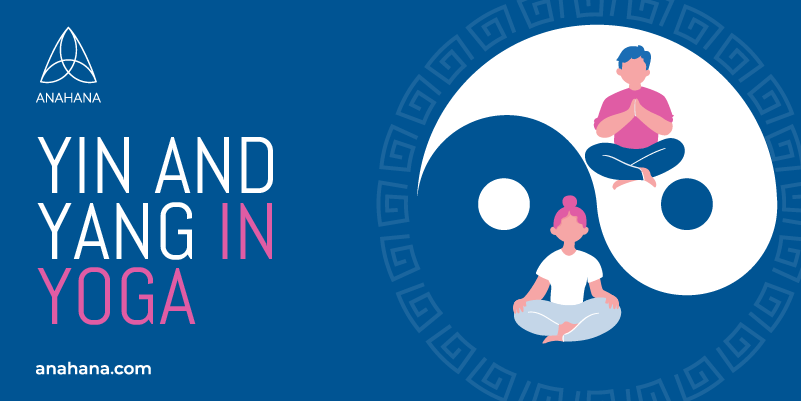
Table of Contents
The origins of yin and yang trace back to ancient Chinese philosophy. Yin and yang symbols are two halves that together complete wholeness. The significance of Yin and Yang through the centuries informs every aspect of Chinese cosmology, astrology, divination, medicine, art, and government.
Key Takeaways
- Yin and Yang are fundamental concepts in Chinese philosophy, symbolizing interconnected and opposite forces within the universe.
- This duality influences every aspect of life, aiming for harmony and balance in Chinese cosmology, astrology, medicine, and art.
- The Yin Yang symbol, representing the constant flux and interdependence of these forces, underscores the importance of balance in achieving a holistic understanding of life and the universe.
Yin and Yang Origin
The Yin and Yang symbol, a universal symbol of harmony and duality, derives from Taoism and represents one of the fundamental principles of Chinese culture. This ancient Chinese concept is based on the belief that everything in the universe contains two opposite yet complementary forces: Yin and Yang. Yin symbolizes the dark, passive, feminine force, while Yang represents the light, active, masculine energy.
These forces are not static but are in constant flux, demonstrating the dynamic nature of the universe. The circle divided in the center symbolizes that these two opposites—Yin and Yang—are inseparable and define each other through their relationship. This interplay is often referred to in Chinese philosophy as the tai chi, or Great Ultimate, from which all dualities and contrasting elements in the natural world proceed.
Yin Yang Symbol Meaning

The Yin Yang symbol reminds us that everything in life contains two opposites, and to maintain balance, we need to find a way to work harmoniously with both sides.
It is also a metaphor for the different aspects of our personalities. We all have a light side and a dark side, and it's important to find a way to balance both.
Yin and Yang (or 陰 and 陽 in traditional Chinese characters) is a reminder that nothing in life is ever truly black or white, and there will always be a gray area.
The "S curve" of the Yin-Yang symbolizes how Yin and Yang's complementary forces are inter-connected and continuously "ebbing and flowing" into one another.
When Yang swells at the top of the circle, Yin contracts, and when Yin swells at the bottom of the circle, Yang contracts.
Symbolism of Yin and Yang
The Taijitu symbolizes Yin-Yang, also known as the "Yin and Yang Symbol" or the "Ultimate Symbol."
The Taijitu is a circle divided into two halves by a curved line. The top half is white and represents Yang, while the bottom half is black and represents Yin.
Taijitu is also a representation of the way that Yin and Yang interact with each other. Yin and Yang are always in a state of flux, constantly moving and changing. Within Yin, there is a bit of Yang, and within Yang, there is a bit of Yin.
Yin and Yang are in everything that makes up the universe, including the sun (Yang aspect) and the moon (Yin aspect). These two forces are in constant opposition but also need each other to maintain a dynamic balance.
Yin-Yang is present day and night, hot and cold, fire and water. All of these things cannot exist without opposition.
Yin and yang are also present in the five elements of Chinese philosophy: wood, fire, earth, metal, and water.
Yin and Yang Lines
I Ching can be used for divination, where different hexagrams and sequences have different meanings. In I Ching, Yin and Yang are each represented by three horizontal lines: Yin's lines are broken, and Yang's are solid.
Various combinations of Yin and Yang lines led to the creation of 64 hexagrams. Each half is split, not by a straight line, but by a perfectly even concave parabolic "S" curve.
Examples of Yin and Yang
The principle of Yin and Yang is that all things exist as inseparable and contradictory opposites.
There are many examples of Yin and Yang in the natural world. Some of these include day and night, winter and summer solstice, hot and cold, and fire and water. Even our bodies have Yin and Yang energies.
Yin-Yang represents the observation of the earth's shadow on the moon and the record of the position of the Big Dipper constellation throughout the year.
These observations make up the four points of the compass:
-
The sun rises in the east.
-
The sun sets in the west.
-
The direction of the shortest shadow measured is south.
-
At night, the pole star points to the north side.
Yin and Yang in Chinese Medicine
Yin-Yang plays a pivotal role in traditional Chinese medicine. The early medical text known as the Huangdi Neijing (The Yellow Emperor's Classic of Internal Medicine) provides a detailed account of physiological functions and pathological changes in the body and guidance for diagnosis and treatment in terms of Yin-Yang.
Westerners may use Yin-Yang in discussing concepts of balance to achieve harmony in their practice of Eastern philosophical or medicinal traditions such as Tai Chi, feng shui, or acupuncture.
Acupuncture is based on the belief that imbalances in the flow of Qi can cause illness. Inserting needles into specific points along the meridians makes it possible to restore balance and promote health. Qi flows through the body in a system of 12 channels called meridians, each associated with a different organ.
Chinese Philosophy
In Chinese philosophy, the yin yang philosophy concept exemplifies the dynamic and interconnected nature of the universe. Originating from Taoism, these principles describe how opposite forces are interconnected and interdependent in the natural world, forming a complementary whole. The Tao Te Ching, authored by Lao Tzu, emphasizes this balance, suggesting that understanding and embracing these forces can lead to harmony and enlightenment.
Yin, characterized by qualities like darkness and passivity, and Yang, represented by light and activity, are thought to influence all aspects of life, guiding behavior and thought according to the natural flow of the universe.
This philosophy teaches that all life is influenced by the yin and yang forces, two opposing but complementary forces, where achieving balance leads to a deeper understanding of the self and the world.
Yin and Yang in Yoga

In yoga, the Yin and the Yang represent the two sides of our nature: the physical and the spiritual.
Yin yoga is a slow-paced practice focusing on lengthening and releasing tension in the connective tissues. This type of yoga is grounding and helps balance the body's energy.
Yang yoga is a more active practice that promotes strength and flexibility. This type of yoga helps to build heat in the body and is energizing. Ying Yang yoga, also called couple yoga, is helpful during pregnancy, where both partners work together to create balance.
Yin and Yang can help you find balance in your life off the mat. You can use the Yin Yang symbol as a reminder to take time for physical activity and stillness, balancing work and play, activity and rest, or other equal opposites in your life.
Finding balance is an ongoing process, but Yin and Yang can be helpful tools on your journey.
Finding Balance Through Yin and Yang
Yin and Yang can be used to find balance in all areas of your life. By becoming aware of the Yin and Yang energies present in your life, you can start making choices that will help you achieve a more balanced state.
In Chinese medicine, Yin and Yang describe the opposing forces that make up the human body. An imbalance of Yin and Yang can lead to illness.
Here's how to find balance with Yin and Yang:
1. Become aware of your life's Yin and Yang energies.
2. Make choices that will help you achieve a more balanced state.
3. Use the Yin and the Yang symbols as reminders to find balance in all areas of your life.
4. Seek harmony between the physical and the spiritual with yoga practices focusing on Yin and Yang energies.
5. Give the Yin Yang symbol as a gift to someone you care about to encourage them to find balance in their own life.
6. Hang the Yin Yang symbol in your home or office as a reminder to find balance in your life.
7. Wear jewelry with the Yin and Yang symbols to remind yourself to stay balanced.
8. Place the Yin Yang symbol on your altar or meditation space as a reminder to seek harmony in your spiritual practice.
Yin and Yang are two halves that make up a whole. You can create harmony in your life by finding a balance between these two energies.
References
Yin & Yang Meaning: History, Examples + 5 Ways To Find Balance | mindbodygreen
Yin & Yang: Symbolic Meaning & Connection to Yoga
Yin Yang: A New Perspective on Culture
The yin and yang of progress in social psychology: Seven koan.
Yin and Yang of the Japanese self: The cultural psychology of personality coherence.
Disclaimer
The contents of this article are provided for informational purposes only and are not intended to substitute for professional medical advice, diagnosis, or treatment. It is always recommended to consult with a qualified healthcare provider before making any health-related changes or if you have any questions or concerns about your health. Anahana is not liable for any errors, omissions, or consequences that may occur from using the information provided.

By: Sydney Garden
Sydney is a skilled writer and editor at Anahana with a diverse educational and professional background. Sydney received her BA (Honors) in Communications from Toronto Metropolitan University and is furthering her education by pursuing her MSc in Human Resource Management at the University of Stirling. While at Anahana Sydney focused on writing spiritual, angel number, and health and wellness content.